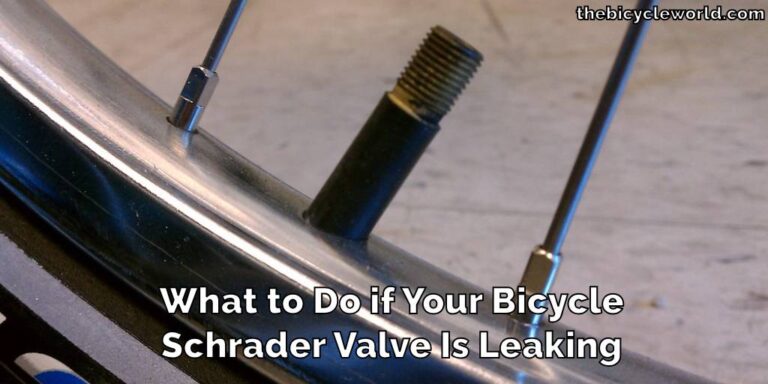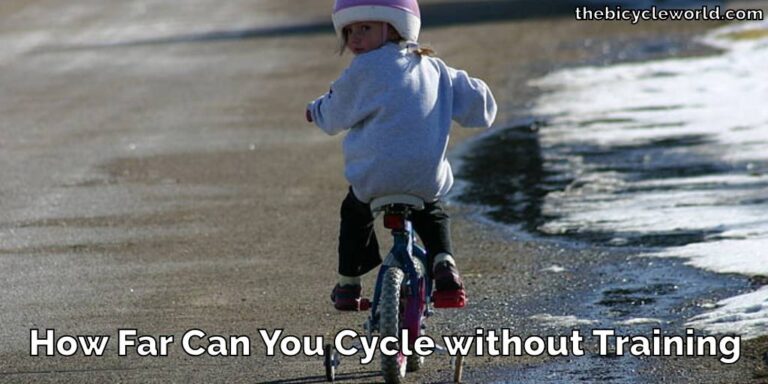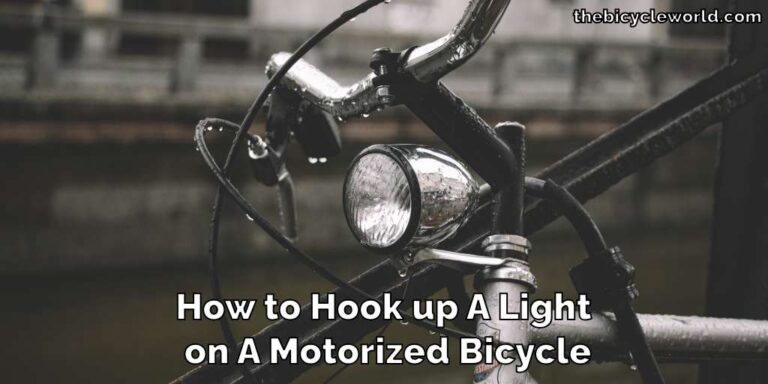How to Carry Water Bikepacking
Introduction
Bikepacking merges the joy of cycling with the excitement of exploration. It challenges your physical stamina and demands smart planning, particularly in managing hydration. Water is essential on any bikepacking adventure.
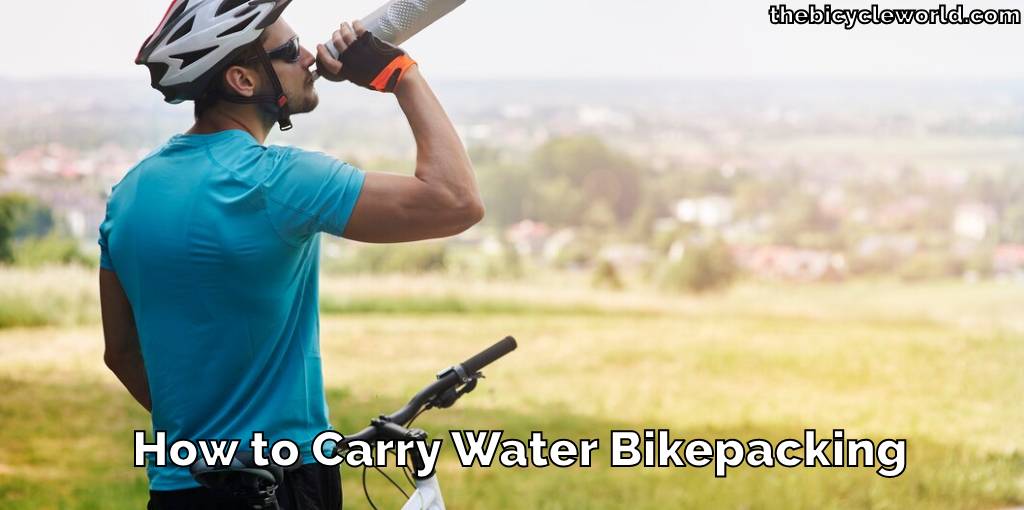
Knowing how to carry and manage it can significantly improve your trip. This guide offers straightforward strategies and tools to help you stay hydrated. We’ll look at various methods suitable for different bikepacking styles.
From basic water bottles to innovative hydration solutions, we aim to ensure you have access to water at all times, keeping your journey safe and enjoyable.
Why You Should Carry Water Bikepacking
Staying hydrated is crucial in any sport or physical activity, and this is especially true for bikepacking. When you’re bikepacking, you often find yourself in places far from shops or towns, where finding water can be a challenge.
Carrying your own water ensures that you have enough to drink at all times, which is vital for your health and performance. If you don’t drink enough water, you might face dehydration, leading to a drop in your energy levels, muscle cramps, and even more serious health problems.
Having water with you helps your muscles work better and keeps your joints moving smoothly. It also helps control your body temperature, which is important when you’re exerting yourself on long rides. Plus, good hydration keeps your mind clear, which is necessary for making quick decisions and staying safe on your journey.
On a bikepacking trip, you might face hot weather, tough climbs, or long stretches without any shade. In these conditions, you can lose a lot of water through sweat. That’s why it’s important to carry enough water and drink regularly. By doing so, you’ll ensure that your body has what it needs to perform at its best, making your bikepacking adventure not only more enjoyable but also safer.
Tools We Need to Carry Water Bikepacking
When you’re bikepacking, carrying enough water is essential. But it’s just as important to have the right tools to carry and access your water easily. Different tools work for different needs and situations. Here’s a list of some key items that can help you carry water effectively on your bikepacking trips:
- Water bottles and cages: Simple and easy to use, these fit onto your bike frame.
- Hydration bladders: These are flexible water bags that can be carried in a backpack, allowing for large volumes of water.
- Collapsible water containers: Great for saving space, these can be expanded when filled with water and collapsed when empty.
- Water purification tools: Essential for making natural water sources safe to drink.
- Bottle holders and mounts: Useful for attaching extra water bottles to your bike in various positions.
Having the right water-carrying tools can make a big difference in your bikepacking experience. They not only make it easier to carry the water you need but also ensure you can access it while on the move. Remember, staying hydrated is key to a successful trip, so choose the tools that best fit your journey and personal preferences.
How to Carry Water Bikepacking (10 ways)
Carrying water while bikepacking is crucial, and there are various ways to do it effectively. Here are ten methods, each explained in detail to help you choose the best option for your needs:
Frame-mounted bottles
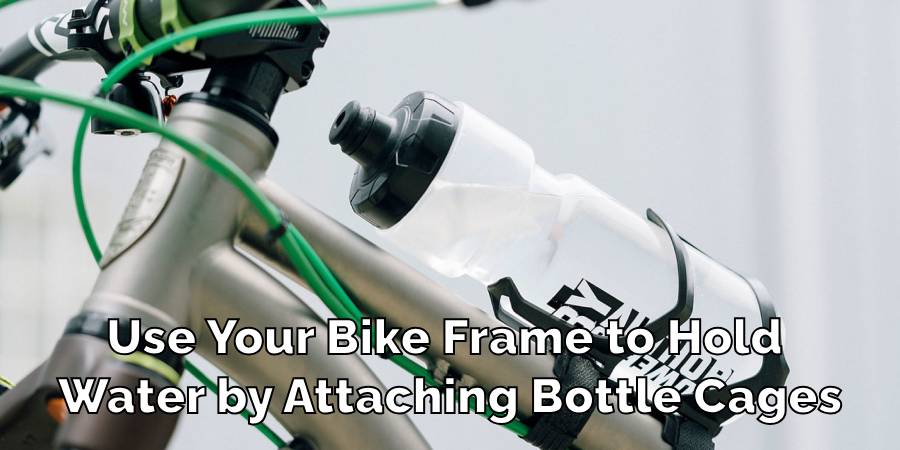
Use your bike frame to hold water by attaching bottle cages. This method is straightforward and efficient. You can place the cages on the top or bottom of the main frame, depending on your bike and preference. It’s a reliable way to keep water within easy reach.
Hydration packs
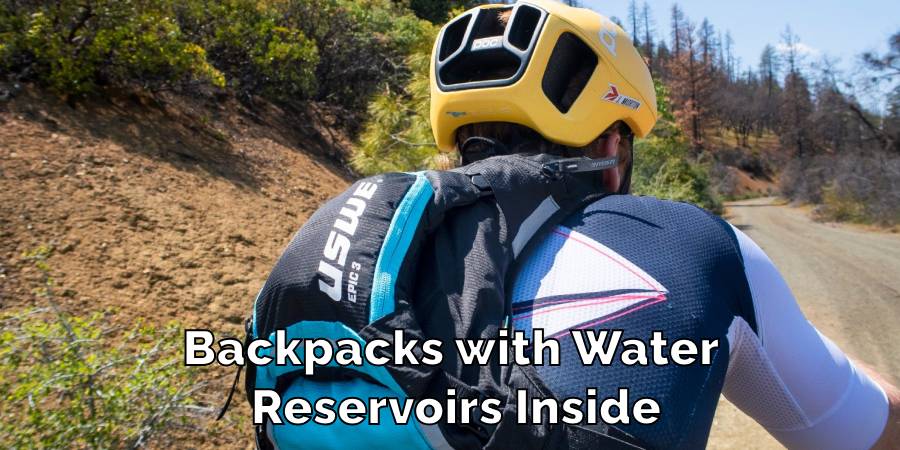
These are specially designed backpacks with water reservoirs inside. They’re perfect for carrying a lot of water without much hassle. The pack’s hose allows you to drink while you ride, which is handy for long stretches without stops.
Seat post carriers
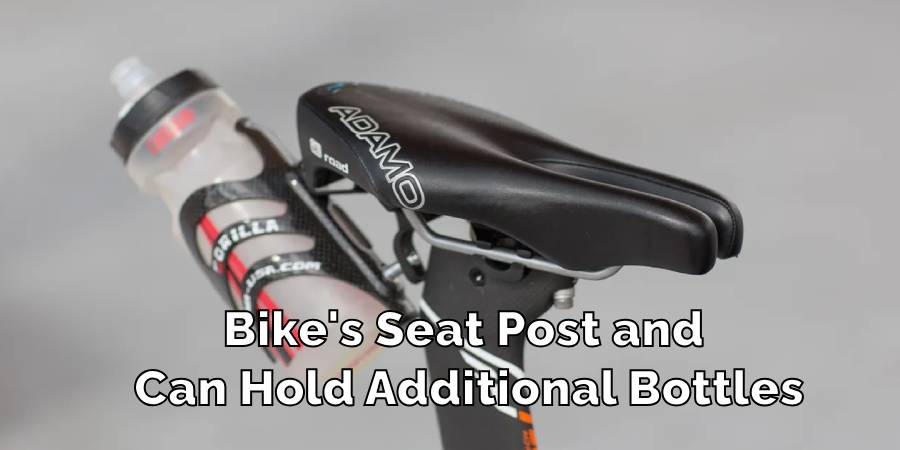
Great for adding extra water capacity. They attach to your bike’s seat post and can hold additional bottles. This option is good if your frame doesn’t have much space for bottle cages.
Handlebar bags
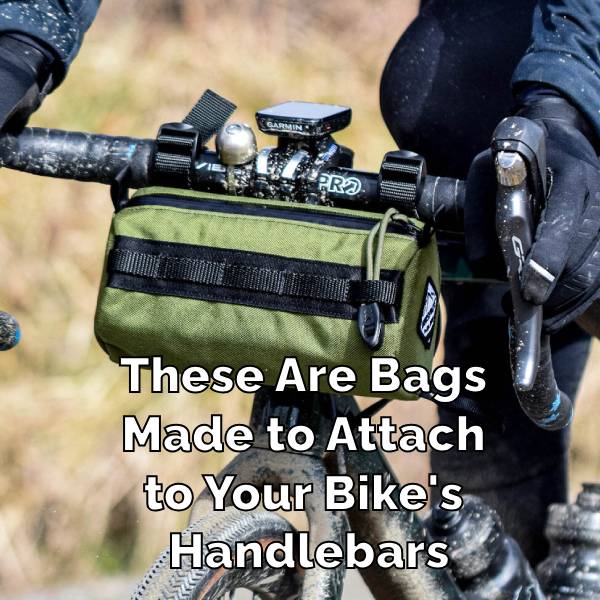
These are bags made to attach to your bike’s handlebars. They can securely hold water bottles and are easy to access while riding. This method is especially good for those who prefer to reach water without having to stretch too far.
Fork mounts
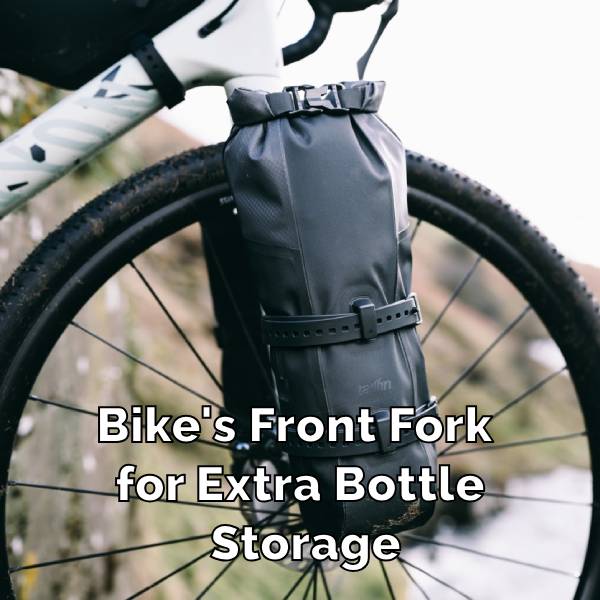
Make use of your bike’s front fork for extra bottle storage. This method helps distribute the weight and doesn’t clutter your main frame. It’s a smart way to carry more water on longer trips.
Collapsible containers
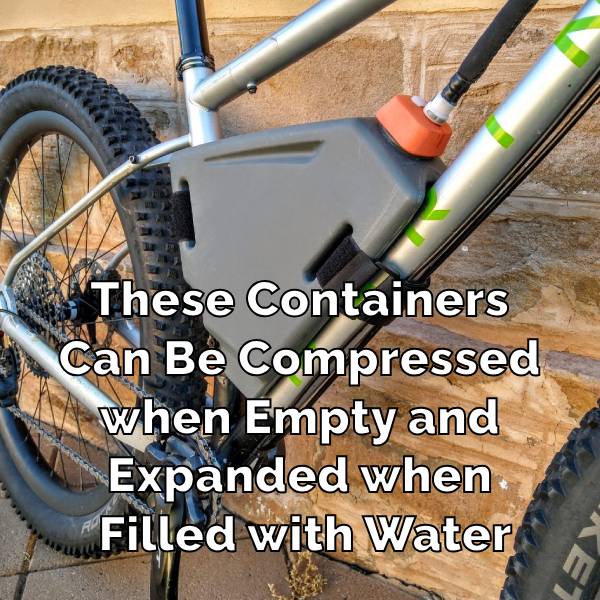
Perfect for space-saving. These containers can be compressed when empty and expanded when filled with water. They are ideal for longer trips where you need more water but have limited space.
Multi-purpose bottle holders
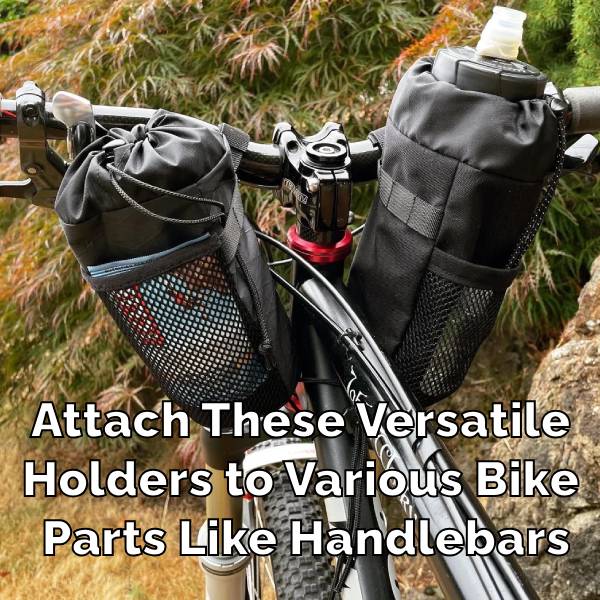
Attach these versatile holders to various bike parts like handlebars, the main frame, or the rear rack. They offer flexibility in water storage and are useful for customizing your bikepacking setup.
Pannier water storage

Panniers are large side bags that attach to your bike. They can hold big water containers, which is great for long trips where you need plenty of water. This option is ideal for bikepackers who are traveling far from regular water sources.
Under-the-saddle bags
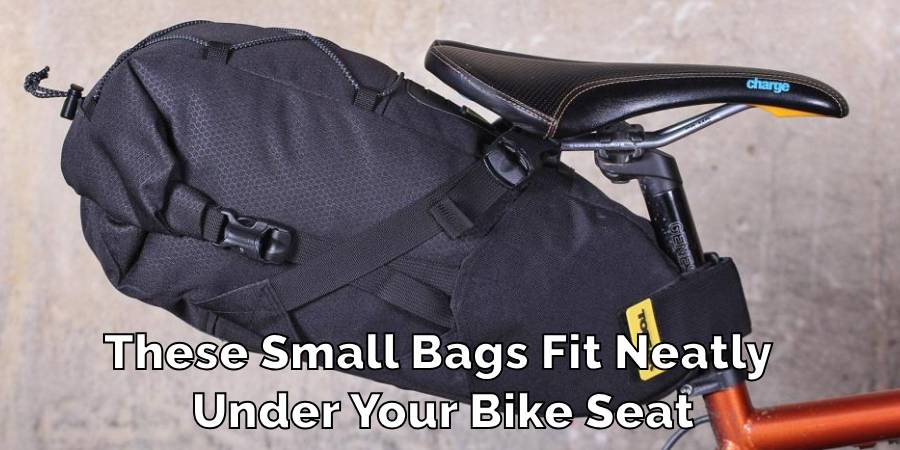
These small bags fit neatly under your bike seat. They’re useful for short trips or as extra storage. While they don’t hold much, they’re great for a quick drink or an emergency water supply.
Water purification on-the-go
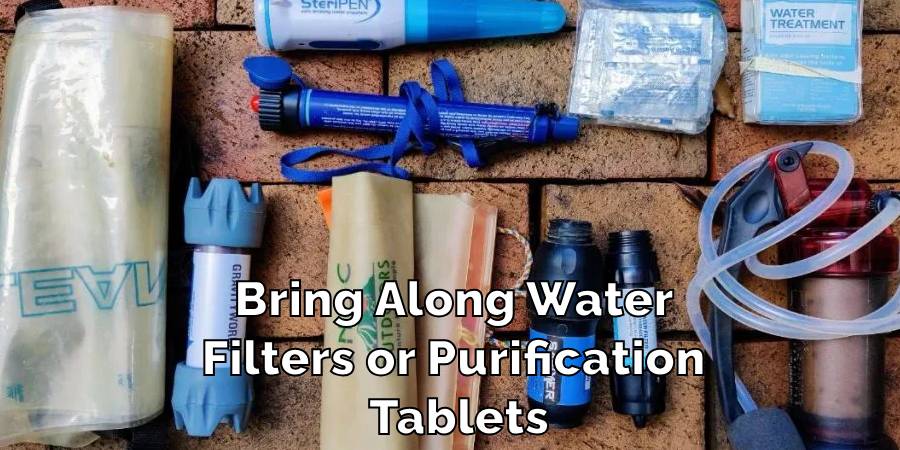
Bring along water filters or purification tablets. This is important for trips where you’ll need to refill from natural water sources. It ensures you have safe, drinkable water throughout your journey, especially in remote or wild areas.
Each of these methods has its advantages, and choosing the right one depends on your trip’s duration, your bike’s setup, and personal preference. Proper water management is essential for a successful bikepacking adventure, so consider these options to find the best fit for your needs.
Precaution while Carrying Water Bikepacking
When bikepacking, paying attention to how you carry water is as important as how much you carry. Maintaining balance and even weight distribution on your bike is key. If the water is too heavy on one side, it can make handling your bike difficult and might lead to accidents or discomfort during your ride.
Always try to spread the water weight evenly across your bike, using different storage methods if necessary.
It’s also crucial to consider the type of containers you’re using. Opt for durable, leak-proof containers to avoid any water loss or damage to your gear. Check your water storage systems regularly for any signs of wear and tear. Be cautious about where you refill your water.
Not all natural water sources are safe to drink from directly due to potential contamination from bacteria, parasites, or chemicals. Therefore, always carry a reliable water purification method, like a filter or purification tablets. These tools are essential for ensuring that the water you drink is safe, especially when refilling from streams, lakes, or unknown sources.
Lastly, be aware of the weather conditions and terrain of your route. Hotter climates or more challenging trails may require you to carry more water than usual. Plan your water needs according to the length of your journey and the availability of safe water sources along the way. By following these precautions, you can ensure a well-hydrated and safe bikepacking experience.
FAQ’s
How much water should you carry bikepacking?
The amount of water you need for bikepacking varies based on factors like the weather, the difficulty of your route, how much you usually drink, and how often you’ll come across places to refill. A good rule is to carry enough to get to your next water source plus a bit more for safety.
For most people, this means about 2-3 liters for a day’s ride. But in hot weather or on tougher trails, you might need more. Always plan for the unexpected, like delays or detours, by carrying a little extra.
How do you drink water while cycling?
To drink water while riding, use water bottles in easy-to-reach spots on your bike or a hydration pack. Hydration packs are great because you can drink from a hose without stopping. Whichever method you choose, make it a habit to take small sips regularly.
This keeps you hydrated without needing to stop often. It’s important to drink before you feel thirsty, as thirst is a sign you’re already getting dehydrated.
How do cyclists stay hydrated?
Cyclists stay hydrated by drinking water regularly throughout their ride. Before starting, drink some water to ensure you’re well-hydrated. During the ride, keep taking small sips, even if you’re not thirsty. After the ride, drink water to replenish any fluids you’ve lost.
In addition to water, consider using electrolyte drinks or supplements on longer rides. These replace salts lost through sweat and can help keep your hydration levels balanced. Remember, good hydration starts before you even get on the bike and continues after you finish your ride.
How can I cycle long distances without getting tired?
Cycling long distances without getting tired requires a mix of physical preparation and smart riding strategies. Start by building up your endurance with regular training rides. During long rides, pace yourself and avoid pushing too hard too soon.
Stay hydrated and eat small, energy-rich snacks regularly to maintain your energy levels. Taking short breaks can also help, allowing your muscles to recover. Make sure you get a good night’s sleep before your ride and listen to your body during the ride. If you feel tired, slow down or take a break.
Is lemon water good for cyclists?
Lemon water is a great choice for cyclists. It’s not only refreshing but also provides vitamin C, which is important for your immune system. The natural sugars in lemon can give you a quick energy boost, while the flavor encourages more drinking and thus better hydration.
Additionally, lemon water can help balance your body’s pH levels and aid in digestion. However, remember that while lemon water is beneficial, it should complement regular water intake rather than replace it. For long rides, you’ll also need plain water to stay properly hydrated.
Final Words
Carrying water effectively is a key part of bikepacking. By using the right methods, like frame-mounted bottles, hydration packs, or collapsible containers, you can stay well-hydrated on any journey. It’s important to balance the water weight on your bike to keep your ride smooth and safe.
Always choose tools that suit your bike and your trip. Whether it’s a short ride or a long adventure, having a plan for where and how you’ll refill your water is crucial.
Remember, hydration affects not just your physical performance but also your overall enjoyment of the trip.
It’s about more than just drinking water it’s about being prepared and adaptable. With thoughtful planning and the right equipment, you can tackle any route confidently. Your backpacking experience can be both thrilling and secure, leaving you free to enjoy the journey and the scenery around you.
Read Also – How To Keep Your Face Warm When Cycling In Cold Weather


